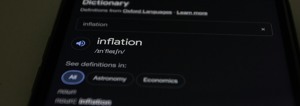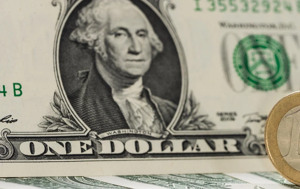Tavex uses cookies to ensure website functionality and improve your user experience. Collecting data from cookies helps us provide the best experience for you, keeps your account secure and allows us to personalise advert content. You can find out more in our cookie policy.
Please select what cookies you allow us to use
Cookies are small files of letters and digits downloaded and saved on your computer or another device (for instance, a mobile phone, a tablet) and saved in your browser while you visit a website. They can be used to track the pages you visit on the website, save the information you enter or remember your preferences such as language settings as long as you’re browsing the website.
| Cookie name | Cookie description | Cookie duration |
|---|---|---|
| tavex_cookie_consent | Stores cookie consent options selected | 60 weeks |
| tavex_customer | Tavex customer ID | 30 days |
| wp-wpml_current_language | Stores selected language | 1 day |
| AWSALB | AWS ALB sticky session cookie | 6 days |
| AWSALBCORS | AWS ALB sticky session cookie | 6 days |
| NO_CACHE | Used to disable page caching | 1 day |
| PHPSESSID | Identifier for PHP session | Session |
| latest_news | Helps to keep notifications relevant by storing the latest news shown | 29 days |
| latest_news_flash | Helps to keep notifications relevant by storing the latest news shown | 29 days |
| tavex_recently_viewed_products | List of recently viewed products | 1 day |
| tavex_compare_amount | Number of items in product comparison view | 1 day |
| Cookie name | Cookie description | Cookie duration |
|---|---|---|
| chart-widget-tab-*-*-* | Remembers last chart options (i.e currency, time period, etc) | 29 days |
| archive_layout | Stores selected product layout on category pages | 1 day |
| Cookie name | Cookie description | Cookie duration |
|---|---|---|
| cartstack.com-* | Used for tracking abandoned shopping carts | 1 year |
| _omappvp | Used by OptinMonster for determining new vs. returning visitors. Expires in 11 years | 11 years |
| _omappvs | Used by OptinMonster for determining when a new visitor becomes a returning visitor | Session |
| om* | Used by OptinMonster to track interactions with campaigns | Persistent |
| Cookie name | Cookie description | Cookie duration |
|---|---|---|
| _ga | Used to distinguish users | 2 years |
| _gid | Used to distinguish users | 24 hours |
| _ga_* | Used to persist session state | 2 years |
| _gac_* | Contains campaign related information | 90 days |
| _gat_gtag_* | Used to throttle request rate | 1 minute |
| _fbc | Facebook advertisement cookie | 2 years |
| _fbp | Facebook cookie for distinguishing unique users | 2 years |
The US Must Refinance $28 Trillion in Debt in Four Years

The pressure on the US budget will increase further in the coming years as the government has to refinance $28 trillion in national debt over four years. This will be done at significantly higher interest rates, meaning that interest payments on the national debt will continue to skyrocket, writes James Hickman, founder of the Sovereign Man portal.
Below we publish Hickman’s writing and podcast:
Last summer, the Federal Reserve tried to convince people that inflation was over. But prices in many product categories continued to rise. Electricity had risen 5 percent in a year, rent and housing costs were up 5 percent. It cost 6 percent more to see a doctor. Food prices were up. Gas prices were up. Car insurance had gone up 18.6 percent.
Even so, overall inflation was, oddly enough, only 2.9 percent. Based on that number, the Federal Reserve declared that the battle against inflation had been won. We knew that was nonsense. After looking at the numbers, we understood why.
Inflation Has Been Kept Down by Falling Used Car Prices

It turns out that in the summer of 2024, used car prices fell sharply – a total of 11 percent in one year. You probably remember what happened during the pandemic. There were bottlenecks in supply chains, factories were closed, and used car prices skyrocketed. Eventually, those prices peaked and then started to fall.
In July 2024, used car prices continued to fall, reaching “normal” price levels
Given how the government calculates inflation, the decline in used car prices also dragged down the overall price index. This gave the impression that inflation was much slower than it actually was.
We wrote about this last summer. We predicted that the decline in used car prices would stop. This was one of the main factors that kept inflation lower. Now it has happened. Last month, used car prices were no longer falling, and at the same time, inflation began to accelerate.
We talk in our podcast about why persistent inflation will be a huge challenge. It’s becoming an increasingly likely scenario [podcast can be found at the end of the article].
The Budget Situation is Getting Worse

Of course, there are forces in government that are doing everything they can to cut costs. In addition, there are also misguided (and corrupt) politicians who are fighting against cost-cutting.
It’s now become a seesaw that can tip either way. But at least for now, the government is spending taxpayer money like a drunken sailor.
Last year’s budget deficit was nearly $2 trillion
We’re already on track to have a deficit of the same size this year. All this spending is adding to the national debt of more than $36 trillion.
The situation is made much worse by the fact that $28 trillion worth of debt will need to be refinanced over the next four years, according to Federal Reserve data.
The key problem is that this debt needs to be refinanced at a much higher interest rate than it was a few years ago. So when the Treasury Department refinances 28 trillion in debt, it is doing so at a much higher interest rate.
Think about it – a lot of the maturing debt was taken out at 2% interest, but now it has to be refinanced at 5% – that’s 3 percentage points more on 28 trillion. That’s an increase of $840 billion in interest costs per year.
Let’s remember that the government’s interest expense is already $1.1 trillion. So in four years it could easily exceed the $2 trillion mark. Again, that’s just interest.
It has also become very clear that many other countries and central banks that hold a large portion of the United States national debt want to invest in other assets. This is already happening. Several vocal BRICS countries have started using their own currencies in trade, starting to reduce the share of the dollar in their trade and reserves. And even several of Europe’s so-called allies are exchanging their dollars for gold.
This creates a dangerous situation because while other governments and central banks are reducing dollar investments, who is going to buy all those $28 trillion worth of bonds that need to be refinanced?
Money Printing Restarts

Ultimately, the only lender is the Federal Reserve. We’ve discussed before how the Federal Reserve buys government bonds with printed money. Ultimately, this leads to inflation.
During the pandemic, the Federal Reserve printed $5 trillion, and inflation rose to 9 percent. Over the next four years, the Federal Reserve may be forced to print a large portion of that $28 trillion simply to help the U.S. refinance its debt. What will inflation be like then? No one knows. But it probably won’t be 2 percent.
The only way out is to aggressively cut government spending. There is a lot of work for DOGE here, and it is possible that they can even get the deficit under control. But it is not without risk. That is why a plan B is also necessary.

















